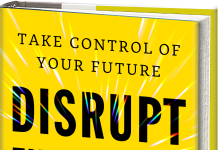
With the global talent shortage becoming an overwhelming issue, it’s clear that in 2023 hiring managers and business executives still will be tackling this problem.
Employees worldwide have stressed their frustration with the work culture that’s existed in most corporate environments for decades. And now, with a record 5 million more job openings than unemployed people in the United States, the workforce has the option of choice.
A report on the matter from CNBC found the following: “When choosing a new employer, good work-life balance and learning and development opportunities were top priorities.”
Companies that show they comprehend the new-age expectations of a modern employer and are willing to adapt to new technology while offering career development opportunities will see a team prepared to stick around.
So here are the three recommendations I have for employers to attract talent during their hiring processes in 2023.
- Implement immersive learning technologies that keep employees engaged.
Higher levels of employee engagement increase productivity in the workplace, and engaged employees outperform their peers who are not. Overall, companies with high employee engagement are 21 percent more profitable.
Therefore, we expect companies to modernize their learning and development delivery approaches by utilizing newer technology designed with employee engagement in mind. Human beings have shown proof that they learn better when genuinely engaged in a learning and development activity. For decades, traditional digital learning within the workplace has consisted of PDF handbooks or mundane training videos, similar to self-paced learning, which shows a significant failure rate of 50 percent.
Immersive learning modules are effective in maintaining higher retention capabilities. Employers can easily create engaging and exciting modules through companies such as NIDUM that are easily accessible from home or within the workplace.
Immersive technology in HR aims to bridge the gap between the physical and digital worlds, creating unique experiences that are far from traditional methods of delivering information. By leveraging this technology, HR departments can create immersive modules through alternative experiential learning methods.
- Enhance soft skill development in the workplace.
With the new-age mindset rapidly moving toward a focus on enhancing skills, Human Resources (HR) departments will start to feel the heat. They need to provide employees with further extracurricular opportunities to boost their soft skills.
Hard skills refer to employees’ job-related knowledge and abilities to perform their duties effectively. However, soft skills—including communication and even time management—often are pushed aside during talent acquisition. This can be the difference between an employee who thrives and one who fails.
Communication is at the core of how we function as human beings. Effective communication mitigates the chances of misunderstandings. On the other hand, a sharp decline in communication can affect workplace productivity. Yearly, per every 100 employees, a company could see an average loss of $420,000 due to a lack of internal communication. Insufficient communication skills can lead to turnover issues and profit loss. So, what’s the solution?
HR teams can implement communication-building workshops to strengthen communication skills and resolve conflicts more effectively and confidently. Effective communication is the most sought-after skill companies look for in potential employees. Clarity is key in ensuring organizations thrive in their business objectives. With an ever-increasing workforce collaborating remotely, a lack of effective communication can show signs of confusion, misunderstandings, and undesirable outcomes, leading to a loss in productivity.
Organizations must over-communicate in a remote work environment, starting at the top management level, to ensure organizational alignment. Communication workshops can be organized to help employees understand the importance of non-verbal and interpersonal communication, which, in most cases, individuals are not even aware of.
In addition, use employee voice surveys regularly to check on various aspects of how effective leadership communication is or to gauge other aspects of work. Creating a culture that promotes a workplace where all are free to express concerns can boost communication among employees and management, build trust, and reduce turnover.
- Adapt learning and development delivery according to each generation.
At Interviewer.AI, we expect to see HR departments in 2023 fostering a culture of life-long learning, being mindful of the generational gap, and tailoring the learning environment to each generation of employees.
It can be daunting for industry professionals to address each generation’s learning needs with their office-wide training programs. However, it is paramount to create a stimulating and productive learning environment for everyone.
Baby Boomers learned in a period when the educational system rested on a foundation of rote memorization. They sat through in-person lectures and completed all their work pen to paper. Baby Boomers often prefer to learn in a traditional classroom environment with a robust teacher-led curriculum. As such, it is wise to introduce traditional training programs that include lectures, worksheets, and other conventional learning activities for those ages 58 to 67.
Millennials are the first generation to be raised in a world where technology is constantly evolving. They are used to receiving information instantly and prefer to learn through interactive and engaging simulations and games. Turn your delivery to interactive activities such as simulations and games and create training programs that include hands-on exercises and online modules for these 27- to 42-year-olds.
Gen Z is the first generation born into a world where technology is constantly on. They have grown up receiving information and communicating in real time. They learn best by doing hands-on activities. They also like to be utterly engaged in the entire learning process and prefer a social learning environment. These 18- to 26-year-olds prefer communication in real time, within a social learning environment, which is the best way to keep them engaged. Implement group activities that require teamwork, interactive videos, and other content designed for pure engagement.
Put Employees First
All in all, the trends we’ll see in the new year focus solely on putting employees first to create a company culture that attracts new talent. This will allow employees to thrive in an environment they find most convenient and suitable, reducing turnover and hiring costs. Hopefully, the global talent shortage can quickly become a thing of the past for your company.



